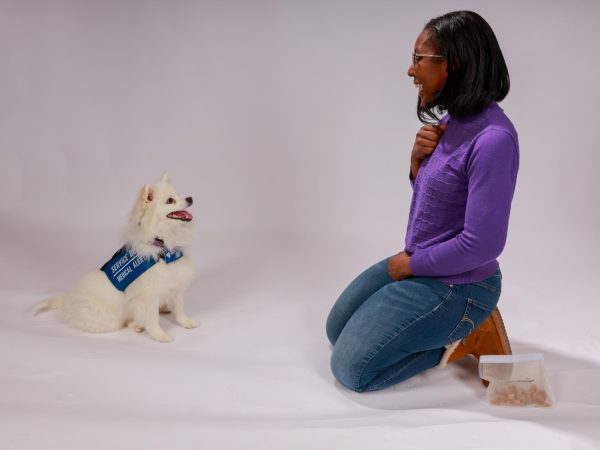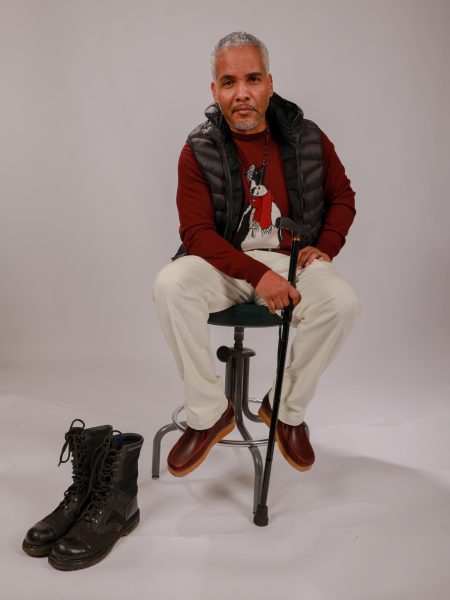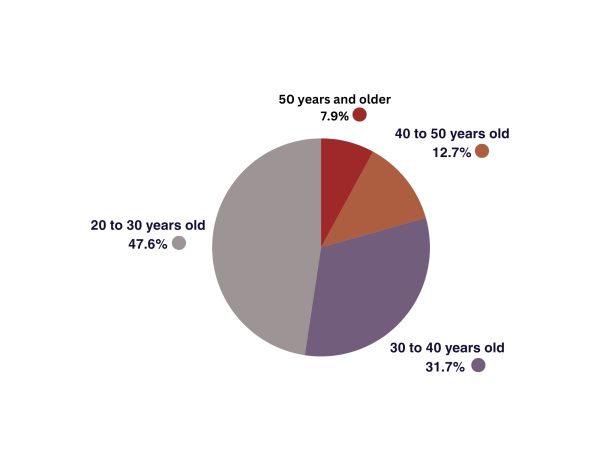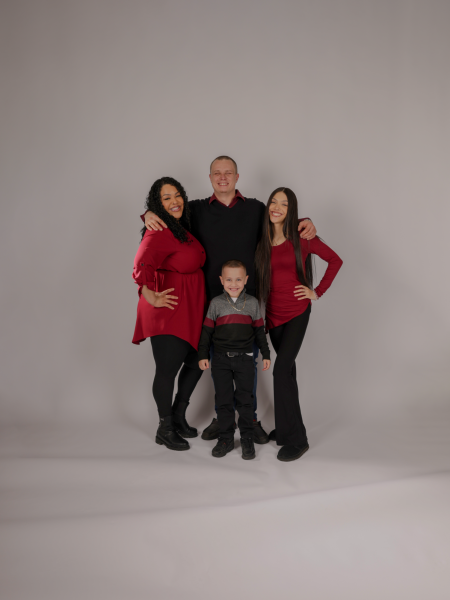
A non-traditional student is typically defined as anyone returning to school after taking a break from their educational goals. While this description may be true, there is a more inclusive definition. One may ask, who is considered a non-traditional student? There are many categories that meet the qualifications. Students 25 years or older. While this description is the most well-known, it’s not the only description. Typically, non-traditional students fall under this category because they didn’t attend college right after high school – Any student who is Active Military or a Veteran. International Students. Running Start students. Parents are also taking the non-traditional route, raising their children while pursuing their education. Students with visible disabilities, and most commonly, students with invisible disabilities.
“An older definition of the non-traditional student said they must be over 24 years of age, have veteran status or traveled or worked after high school graduation. That definition needs an update, because now so many other indicators apply.”
– Seattle Times 2024
Community College: a Steppingstone
Community college can provide a steppingstone for those who are ready to embark on their journey in higher education. Of course, everyone is on their own path while attending school and that comes with various challenges. Non-traditional students have to balance school commitments with other responsibilities at work and with their dependents and maintain relationships with family and friends. There are similarities like life experience and character-building resilience that link non-traditional students together.
Demographics and Challenges of Non-Traditional Students
Recent statistics show that non-traditional students are increasingly diverse. Older students often have significant work and life experience, which can enrich classroom discussions and provide practical insights. Many have previously attended college or pursued vocational training. Older adults may have additional responsibilities, such as raising children and caring for family members, which can impact their educational journey. They may be returning to school to advance their careers, change fields or gain new skills. There are many challenges to being an older student, such as time management, technology skills and cultural adjustments. Despite the challenges, older students often bring valuable life skills like problem solving, critical thinking and enhancing group work discussions.
Students with Disabilities
Students who are disabled and attending college are often left out of the non-traditional classification, despite their unique challenges. Many disabilities are not visible, such as neuro-divergence, attention deficit disorder or autism spectrum disorder. Some can be physical, emotional or neurological. These conditions can impact a person’s movements, senses, learning and work abilities. As a result, these students must navigate a more challenging environment, placing them apart from a traditional college experience.
Access and Disability Services helps students with either temporary or permanent physical, health, learning, sensory and/or psychological disabilities. ADS provides reasonable academic accommodations and support services for students with disabilities in accordance with the Americans with Disabilities Act, also known as ADA.
 Shantaa Watkins, neuro-divergent student (who turns 40 this year!) works hard not to let her disability stand in the way of her goals. Williams has been diagnosed with Ehlers-Danlos Syndrome and Cozmo is her “lifeline” that makes her goals in life possible. Service Dog Cozmo notifies Williams when she might be having an episode that she needs to prepare for. Williams is earning her transfer degree and will be getting her BA in linguistics and a minor in ASL at UW. She plans to be an ASL interpreter when she “grows up”.
Shantaa Watkins, neuro-divergent student (who turns 40 this year!) works hard not to let her disability stand in the way of her goals. Williams has been diagnosed with Ehlers-Danlos Syndrome and Cozmo is her “lifeline” that makes her goals in life possible. Service Dog Cozmo notifies Williams when she might be having an episode that she needs to prepare for. Williams is earning her transfer degree and will be getting her BA in linguistics and a minor in ASL at UW. She plans to be an ASL interpreter when she “grows up”.
Treva Adkins is a non-traditional student and fits into multiple categories of non-traditional classification. She is 45 years old and a parent of four. She decided to return to school long after graduating high school in 1997.
“High school was difficult. I wasn’t diagnosed [with ADD & ASD] until my late 30’s. Getting that diagnosis changed the way I approach learning. It was validating. I have more confidence now than I did in high school. I ask questions, take part in discussions, voice my opinion and put myself out there. It’s not difficult for me to be vulnerable anymore.”
Gary Karp, a professor of disability history at Arizona State University states, “More people now are out and able to get education, work, travel… so much more mobile population and more highly educated.” At the age of eighteen Karp suffered an injury, resulting in paralysis. “Now there are disability student services offices in every college and university across the United States” (Karp 2024)
Karp discusses the Americans with Disabilities Act officially signed into law on July 26, 1990, by President George H.W. Bush. The ADA is a landmark civil rights law that affirms the dignity of every person, regardless of disability. The ADA has benefited college students with disabilities, by guaranteeing them equal access to education, requiring institutions to provide reasonable accommodations, ensuring physical accessibility of buildings and facilities which allows students with disabilities to fully participate in college life without barriers.
Running Start 
Running Start students are the “new” non-traditional students. These students earn both high school and college credits simultaneously, for free or little cost, providing a unique educational opportunity. True to its name, this program allows high school students to have a running start in life. By the time they earn their high school diploma, they can also earn a transferable associates degree. Running Start students represent a unique demographic within the educational system. Attending both high school and college is not an easy task. Most students are in their junior or senior years of high school, usually between 15 and 18 years old, and make up 60% of the student body at Pierce College. Obstacles these students face include conflicting class schedules, different midterm and finals weeks, opposing breaks and transitioning from high school to college-level coursework. Despite the challenges associated with opening community college classrooms to more high school students than ever before, faculty still see the program in a positive light.” (Bachman 2021)
Jayla Guitierres (she/her) is a high school senior and 2nd year Running Start student. She takes one class at her high school and the rest at Pierce College. Guitierres has plans to pursue entrepreneurship after her duel graduations and wants to be a business owner. In her free time she likes to design things. Both her and her mom, Jireha Jefferson-Newman (pictured on next page) love going to the ocean, traveling to see Kevin Gates concerts and designing.
“Not a lot of organizations in civilian life match the pace that soldiers have in the military. Transitioning from soldier to student can be terribly difficult.”
-Andrew Pierce, Veteran Support Services, Pierce College
Military and Veteran Students
Active Military students are in fact, non-traditional and often have unique experiences and circumstances that distinguish them from traditional students. Many have taken breaks from their education to serve in the military, which can affect their academic timelines. Students in the military bring important skills like discipline, leadership and teamwork into the classroom. These students have also gained specific training that’s only found in the military, which can be vastly different from standards civilians are accustomed to. Challenges that these students face outside of the classroom include the possibility of government shutdowns, required flexibility due to deployments, constant training and other military obligations.
 23-year old artist and geology student, Hunter Paro (they/them) is an Active Military student who will become a Veteran this year when they separate from the military and join civilian life. Paro is the first person in their family to graduate high school and attend college. They are also the first person in their family to leave the south/midwest of the U.S., fly in a plane or visit overseas. While in the military, Paro lived and worked in Japan for three years. Paro joined the military as a steppingstone to improve their life; to get access to healthcare, a stable salary and a higher education. Paro is a childhood abuse survivor and sexual assault survivor. When Paro graduates later this year they will go on to university and join the field of geology with a focus on paleontology.
23-year old artist and geology student, Hunter Paro (they/them) is an Active Military student who will become a Veteran this year when they separate from the military and join civilian life. Paro is the first person in their family to graduate high school and attend college. They are also the first person in their family to leave the south/midwest of the U.S., fly in a plane or visit overseas. While in the military, Paro lived and worked in Japan for three years. Paro joined the military as a steppingstone to improve their life; to get access to healthcare, a stable salary and a higher education. Paro is a childhood abuse survivor and sexual assault survivor. When Paro graduates later this year they will go on to university and join the field of geology with a focus on paleontology.
Non-Traditional Veteran Students are individuals who have served in the military, completed their tour of duty and are pursuing higher education using their G.I. Bill. Many veteran students are older than typical college aged students, often in their 30’s or older. Veterans bring unique life experiences, such as teamwork, leadership and discipline. Veterans come from all military branches and have different experiences, all of which can influence their educational goals and aspirations. Some challenges veterans face while attending college are the transition from military to civilian life and some may face possible mental health concerns related to their service. According to Pierce College, 12% of students are Active Military and Veterans. These students play an important role in the educational landscape, bringing a wealth of experience and perspective while also facing unique challenges.
Born in 1974 in Chicago, Illinois, Maurice “Michael” Ramirez graduated high school in 1992 before serving in the U.S. Army for 25 years. As a mechanic/engineer, Ramirez was deployed to Iraq, Afghanistan and Kuwait. He became a veteran after issues with his health and was eventually diagnosed with M.S. As a Veteran, Ramirez earned degrees in Information Systems and Fashion Design and is now in the New Media & Graphic Design program at Pierce College. Despite his invisible disability, and sometimes visible with his use of a cane, Ramirez doesn’t let anything keep him from moving forward and upward.
International Education
Students in the International Education program at Pierce College make up 3-5% of the student population and can also be considered non-traditional students and the number of international students coming to the U.S. for higher education has grown in popularity over the last 10 years. These students differ from the typical profile of college students in their host country as well as their home country, putting them in multiple categories as non-traditional students. For many International Students, there are the challenges of adjusting to a new culture; language barriers, leaving friends and family behind to pursue higher education and navigating Visa regulations.
Anudari “Anu” Nyambaatar graduated high school in Mongolia in 2023 before coming to Washington State to pursue her New Media & Graphic Design degree at Pierce College in the International Education Department. Nyambaatar likes mandala panting and working on brain yoga books to calm her mind and relieve stress. She especially loves animal themed designs. She loves white dogs, hiking, walking to the park and being in nature. Spending time with family and loved ones is very important to her.
Statistics of Non-Traditional Students

“Non-traditional students report significantly higher levels of interest and teacher influence. Institutions of higher education continue to see an increase in non-traditional students pursuing a higher education.” (Johnson et al 2016)
Parents & Caregivers
Parent Students take on many roles while raising children and attending college. They are first a parent, but also a peer, a sibling, a coworker and a friend. The combination of these different roles within one individual can cause a multitude of emotions and internal tensions. In addition to working, students with children have significant care obligations that can impact their time and finances. Challenges parents face while attending higher education can include financial obstacles, childcare, time constraints, isolation and pressure on their mental health.
Jireha Jefferson-Newman is no stranger to hard work and responsibility. Jefferson-Newman is in her 3rd year at Pierce College and working towards her BAS in Accounting and plans to be a Certified Public Accountant. In a non-traditional sense, Jefferson-Newman fits multiple categories. As a wife and a mom, she enrolled in college later in life, works part-time as a tutor and stays on top of classes as a full-time student. Jefferson-Newman and her husband, Kenny Newman, are dedicated parents to Amias (5) and Running Start student, Jayla (16).
Raising children as a student isn’t a new concept and there has been a rise in single parents earning their degree in higher education. Nearly 2.1 million students are raising children without a partner. 11% of all undergraduates. Student Parents are recognized as non-traditional students in part due to their unique challenges. The largest share of students who are single mothers are enrolled in community college. 44% of all single mothers, who are also students, attend public two-year institutions. Among women in community college, 21% are single mothers, compared with 7% of women in four-year institutions. (Institute of Women’s Policy Research)
In 2022, 1,952 degrees were awarded across all undergraduate and graduate programs at Pierce College District. 70% of these degrees were awarded to women, and 30% awarded men. Pierce College District | Data USA
College students raising children also have strong characteristics, such as drive, focus, motivation and resilience. In many ways, being a parent can make someone a stronger student. Many parents know exactly what they want from the college experience and must make many sacrifices to be in the classroom each week.
Support for Non-Traditional Students
Higher education institutions have supported non-traditional students in many ways, providing flexible learning options such as online and in-person courses, financial aid, scholarships and inclusivity. These combined factors have empowered students to feel accepted in a brand-new environment.
“Embedded in the core values of Pierce College is a commitment to ensuring access to a quality higher education experience for a diverse student population.”
Pierce College is one of those higher institutes that strives for inclusivity and acceptance, including non-traditional students who are striving to further their education at different stages in their life. Everyone is on their own journey, striving to achieve their goal.
